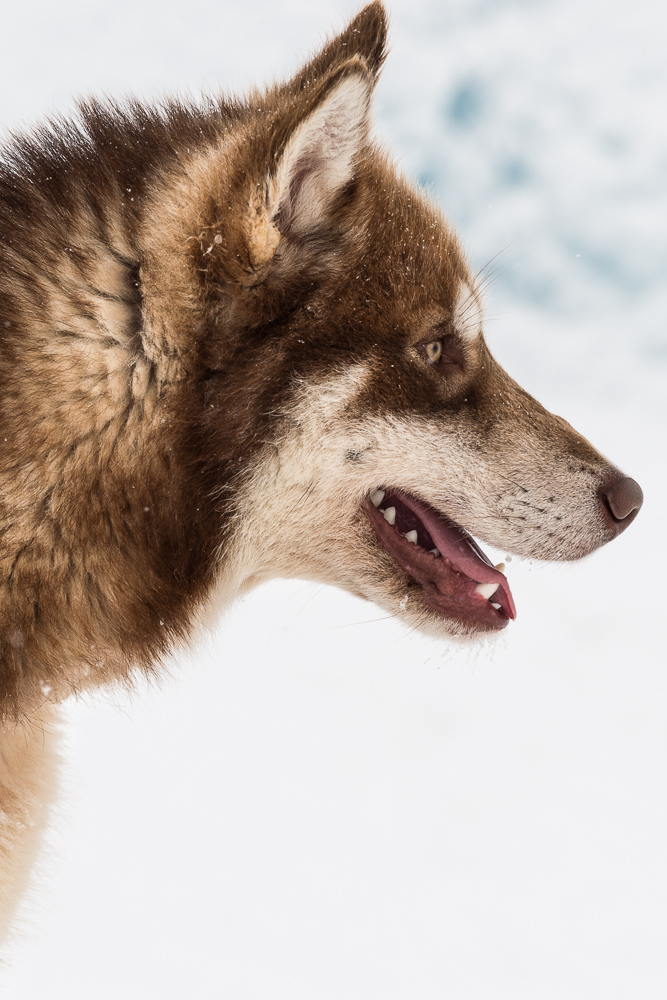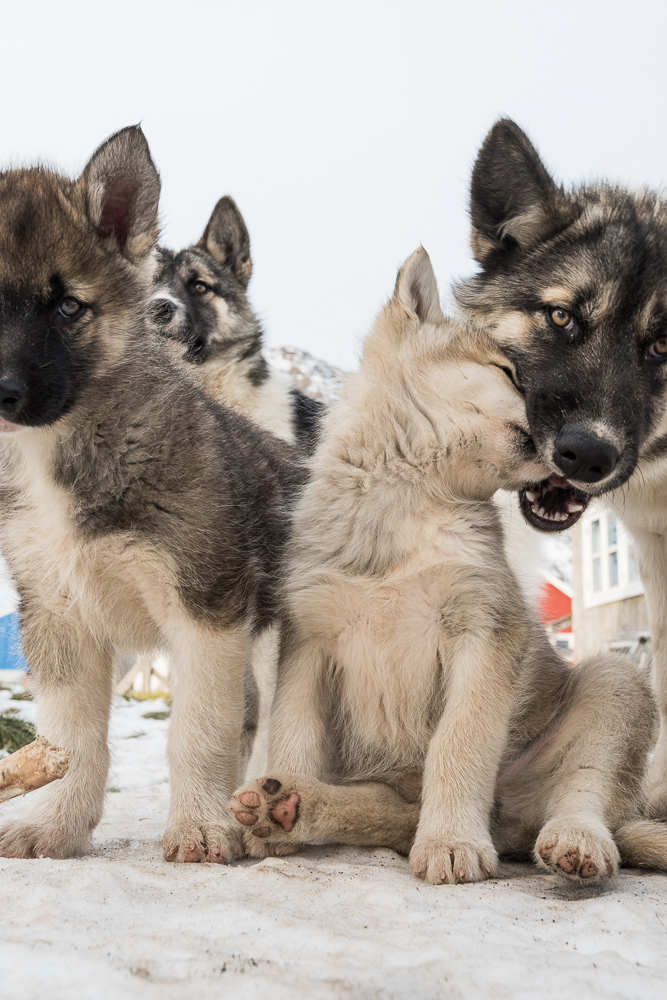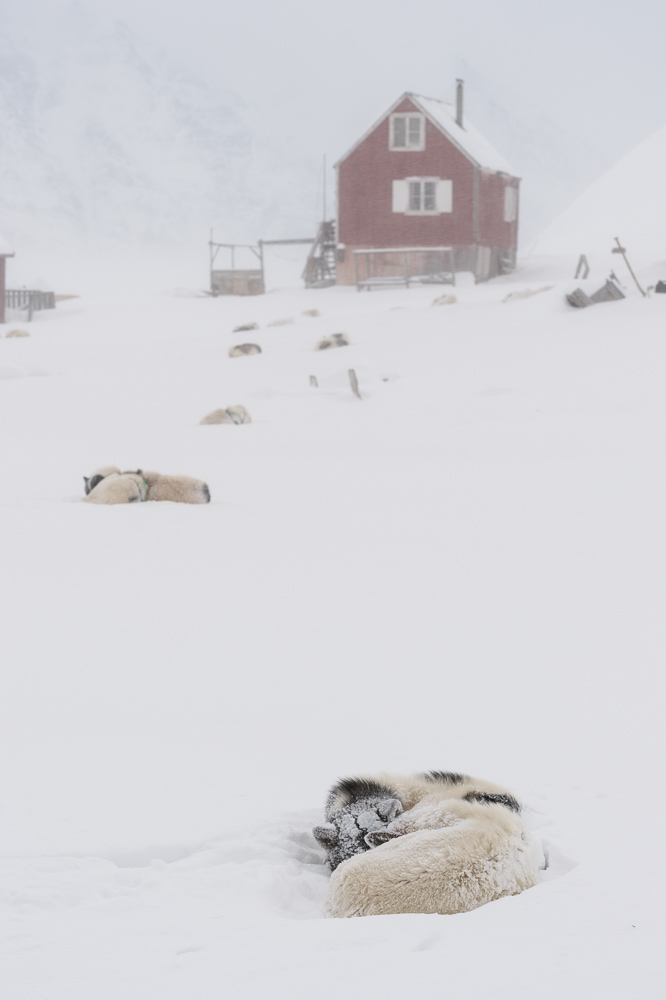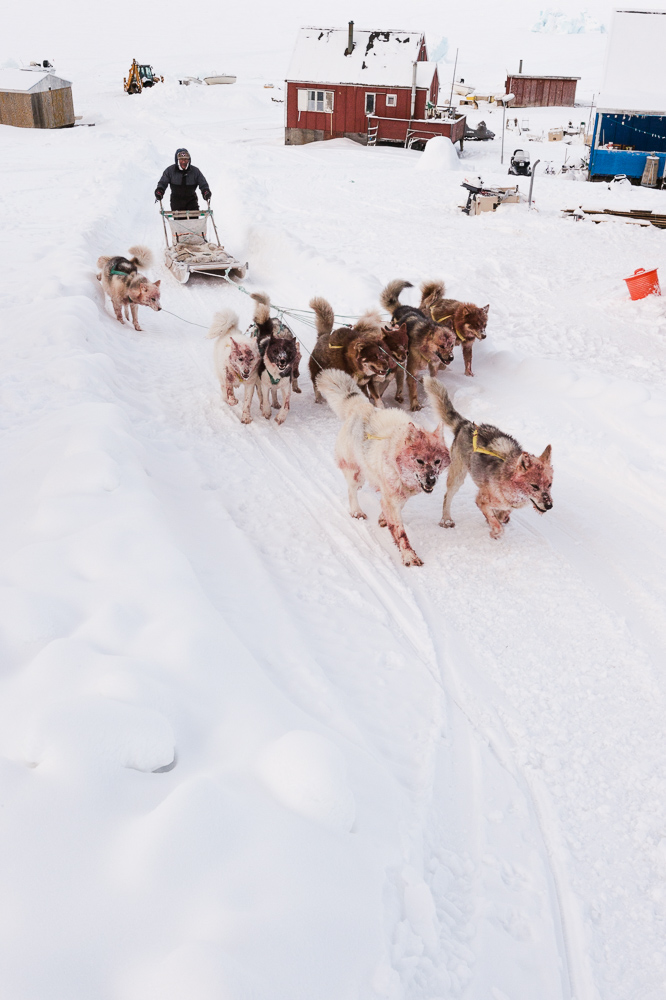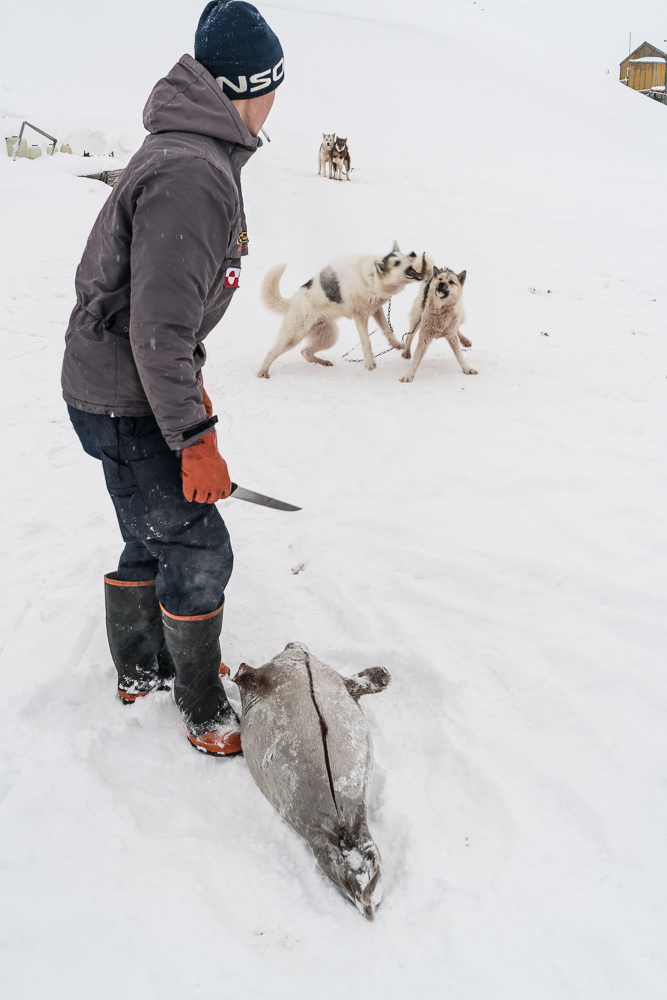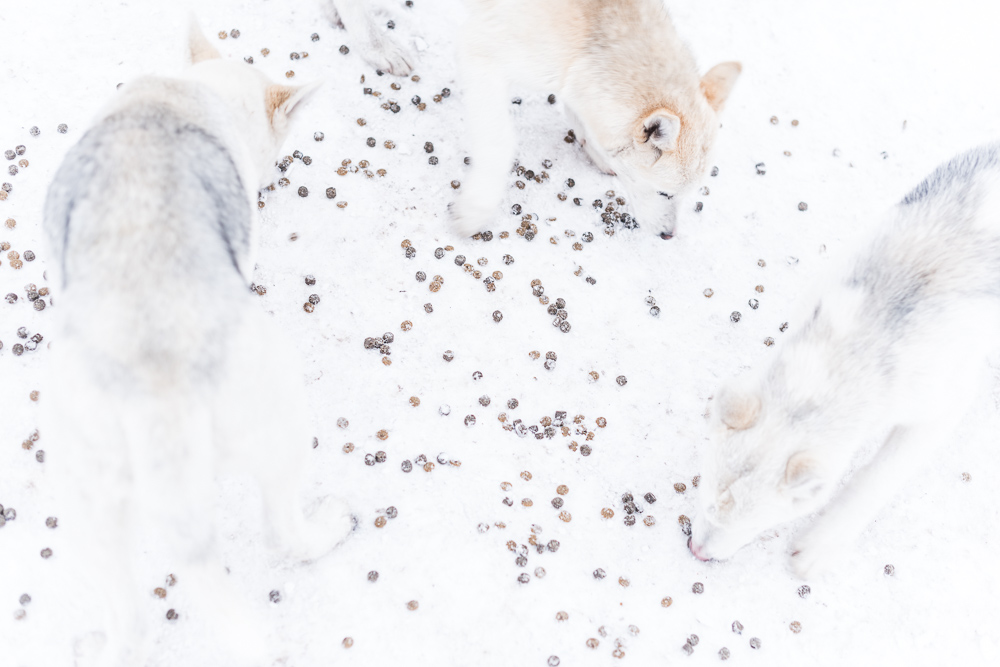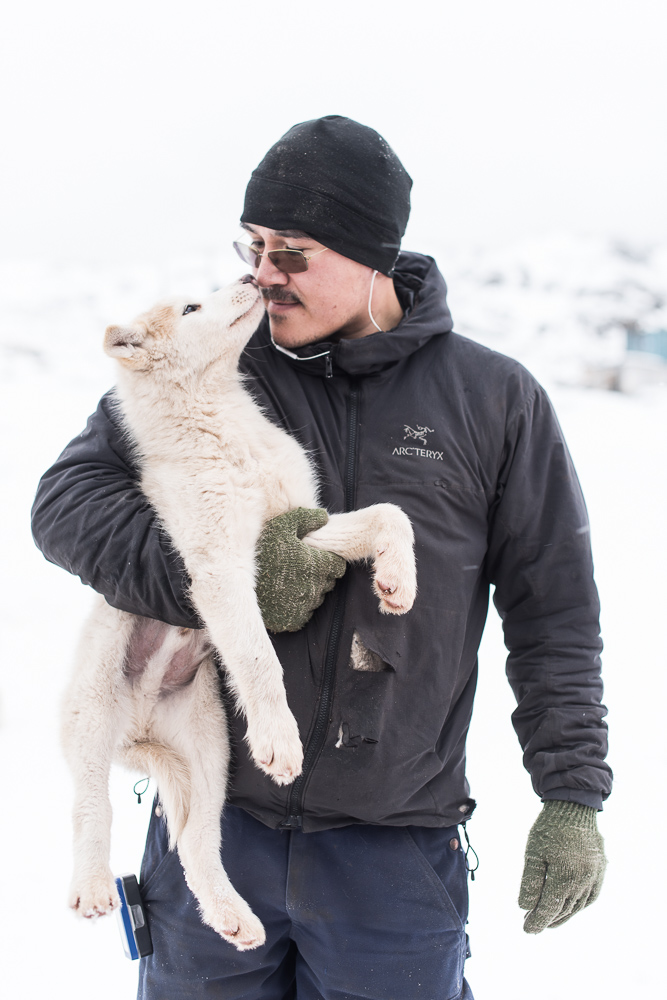Faculty News: Denis Defibaugh shares some stories from his Professional Leave
Greenlandic Sledge Dog; An Icon of the Frozen Arctic|
Photographs and text by Denis Defibaugh
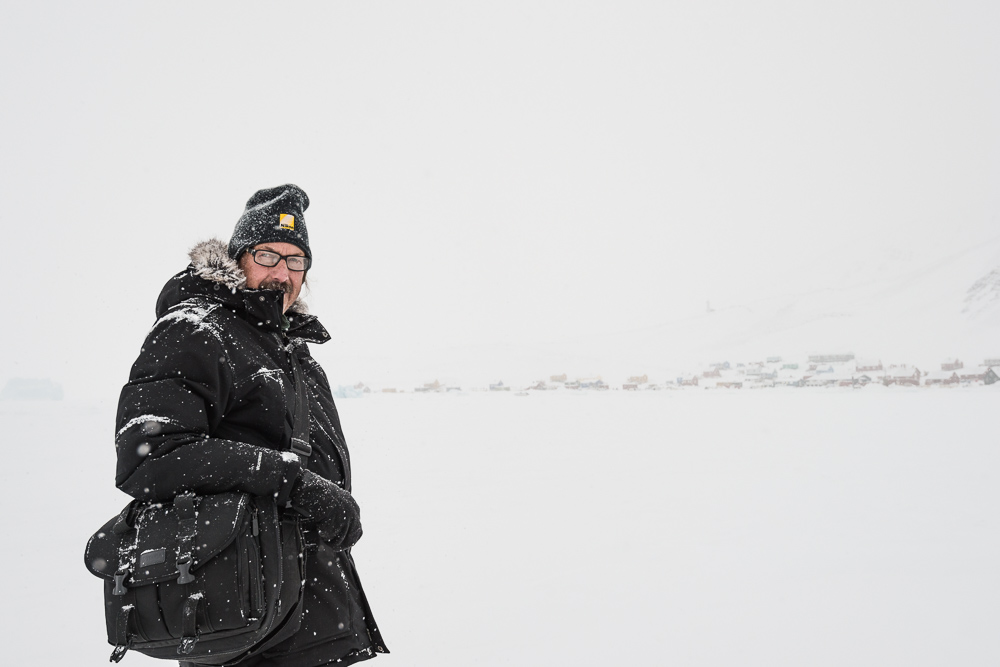
Many people ask me why I wanted to go to Greenland to work on a photography project. Actually, most people think I went to Iceland. While Greenland is a remote and cold island, it has one of the most unique cultures and beautiful landscapes in the world. Though it is the largest island in the world, it’s population is only about 50,000 inhabitants. All Greenlanders live on the coast, because 80% of the island is covered by a shrinking ice sheet that can be as thick as 2 miles deep. This was richly illustrated in National Geographic’s June 2010 issue.
Why Greenland?
Three basic reasons drove my interests
1. My interest in exploring and researching the unusual or non-mainstream subject. Greenland is perfect for this goal. 2. To learn more about the American artist, writer, adventurer, Rockwell Kent. He spent several years in Greenland in the early 1930’s creating art and writing about his experience. He also created a series of photographs that very few people have ever seen. I was excited to produce a photography document that is a comparative study to Rockwell Kent’s photographs, printmaking, and writings. 3. I wanted the challenge of working in a difficult situation that could produce exceptional and expressive photographs. The difficulty proved very true with long periods of travel to remote settlements, living minimally, communicating without speaking the Greenlandic language, and gaining acceptance into the communities that I documented.
In 2015, I applied for and received an NSF grant which made it possible for me to produce this project. Without the support of the NSF and the Inuit people of Greenland the project would not be possible. More info about the project can be found in the ScienceNordic story:http://sciencenordic.com/american-adventurer-captured-1930s-greenland-film
There are a number of topics that were explored in Greenland, but the Greenland Sledge Dog is an iconic aspect of the Inuit culture of Greenland that I wanted to discuss and publish in this blog post. The dogs were first introduced to Greenland by Siberian immigrants to Greenland some 1000 years ago. For many years, they have been the dominant mode of transportation during the long winter months. That is changing all over Greenland and the number of dogs is decreasing. According to Greenland statistics, in the last 25 years the dog population had dropped from 28,000 to 14,000 in 2016.
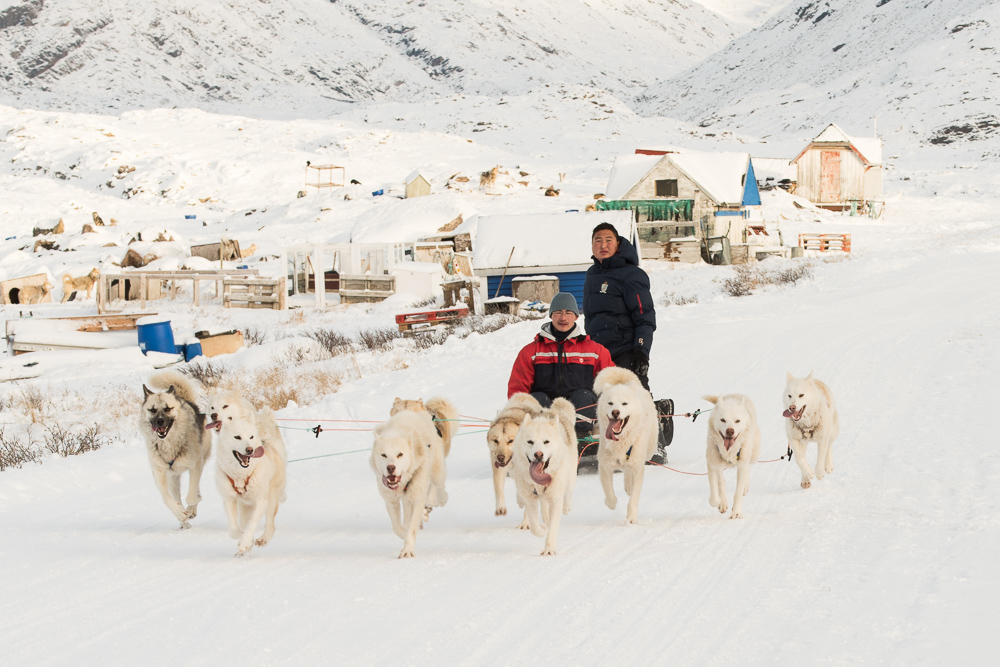
Because of the cost of feeding the dogs, upkeep required for the dogs, and the time needed to care for dogs, many Inuit today are using snowmobiles for hunting and fishing. Still for some hunters, the dog sledge remains the preferred mode of travel for winter hunting of seal. A dog sledge is quiet, so much easier to get closer to seals, dogs understand the nature of ice and the dangers associated with melting ice that comes with climate change and warming winter temperatures. Dogs instinctively will know to steer clear of thin ice. There is also a bond between master and dogs.
This bond is one of master and working dogs. These dogs are not pets. They never are inside a home, one does not play with a sledge dog. There is a hierarchy to the team with an alpha dog as the leader that often times is decided by fighting within the team. Puppies are usually permitted to roam untied until they are 6 months old then they are chained for the rest of their existence, unless they are pulling a sledge on the ice. This is the reason for the dog’s existence, they are excited by the thought of being on the ice, off the chain, and harnessed to the sledge with as many as 12 smart powerful dogs ready to run. They are off like a shot from a canon, as they speed onto the vast frozen fjord.
More info about Greenlandic sledge dogs can be found in the ScienceNordic story:http://sciencenordic.com/greenlands-sled-dog-population-decreasing-rapidly
All Photos: by Denis Defibaugh

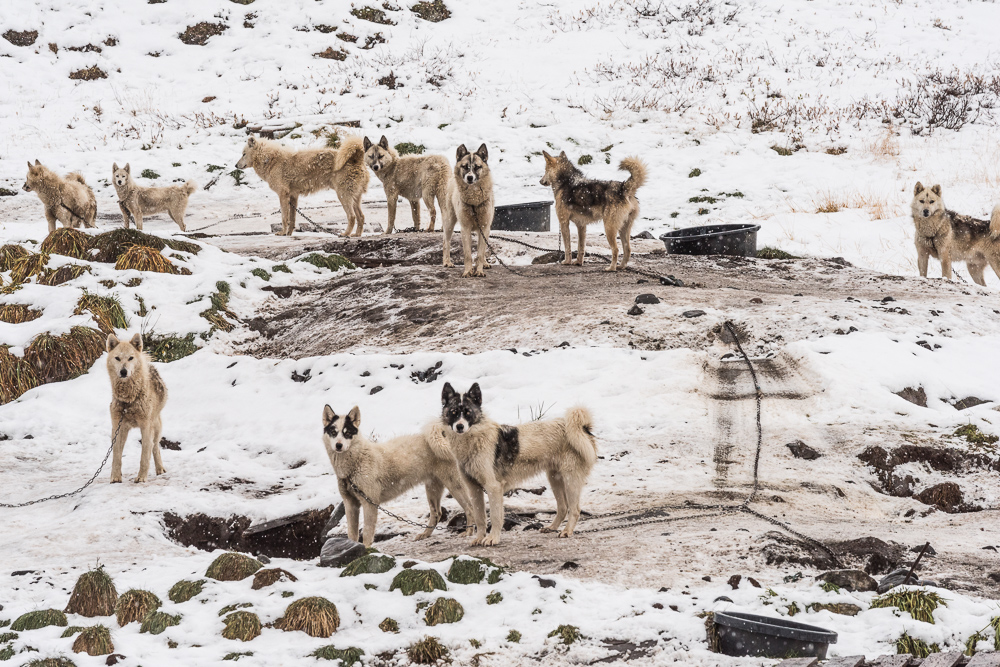
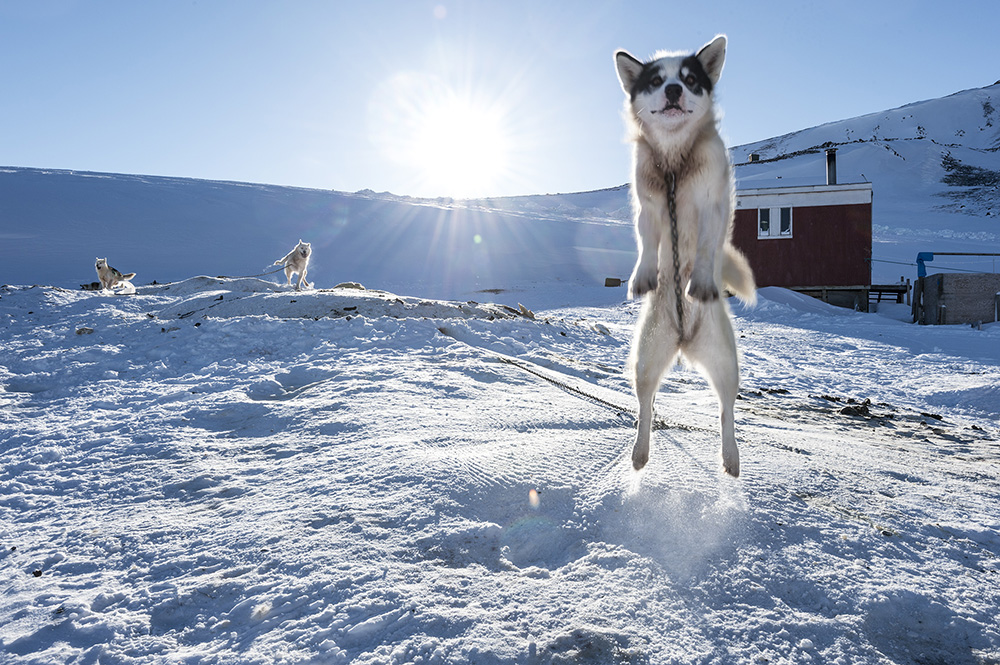
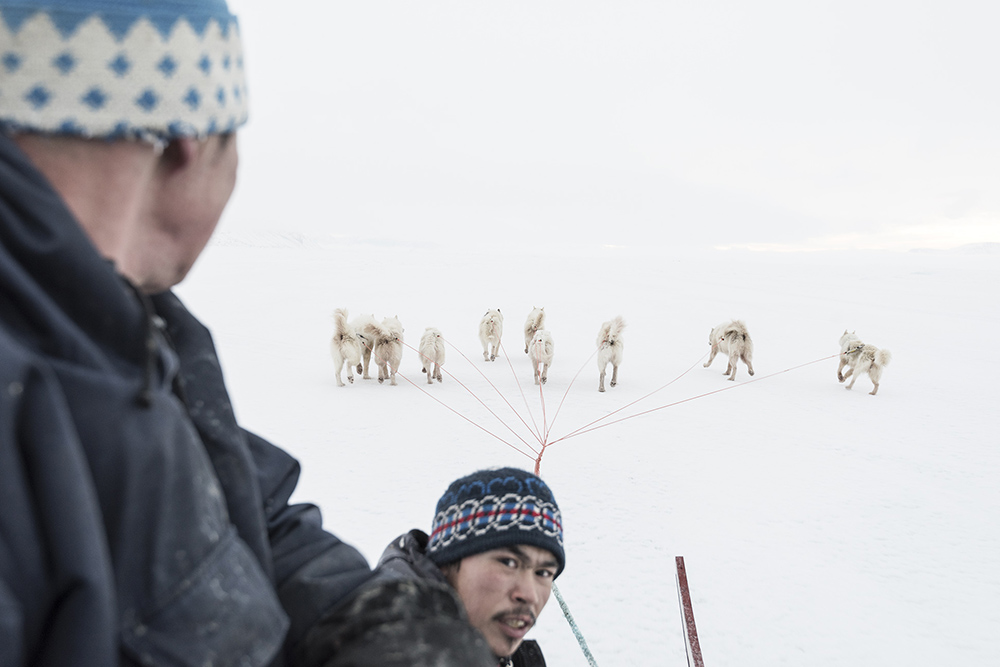
Puppies eating dog food. Most dogs eat fish more often than dog food that is purchased at the market.
Jeneeraq Ingemann with his dog. He is close with his dogs, but he makes sure they know who their master is.
